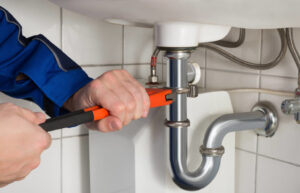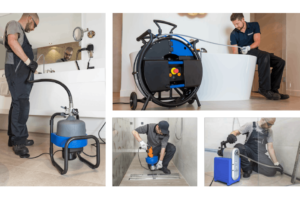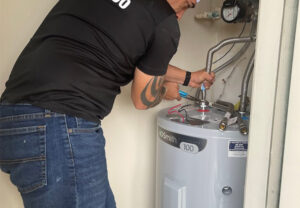Emergency Plumber Aurora CO can strike without warning and cause significant damage in a short amount of time. Hiring a reputable emergency plumber will help minimize damage and costs.
When you call a 24-hour plumber, they will assess the situation and follow any safety precautions needed. They will also investigate the problem to find the root cause and avoid band-aid repairs.

- Burst Pipes
When pipes burst, it’s a serious problem that requires immediate attention. Water can flood your home and cause significant damage in the process. If the leak is left unattended, it can also lead to the growth of mould which poses health hazards for all occupants of your property. Luckily, there are some things you can do to prevent this from happening.
The first step to take is to shut off the water supply at your home’s main valve. Once the flow of water is stopped, you can then look for the source of the leak. This may require some investigation and the use of special tools, but it is crucial to prevent further damage from occurring.
Once you’ve found the source of the leak, it’s important to assess the damage and to take pictures if possible. These records will be helpful for when you file a claim with your insurance company.
Water leaks can be caused by many things, from frozen pipes to damaged valves. You might be able to detect some of these issues by listening to loud pinging noises coming from your walls or ceilings. Other clues to watch for include dark spots on your ceiling or floors and visible water damage.
There are several ways that a plumber can fix a leak, from replacing a valve to installing new pipes. However, it’s always best to find a professional plumber who is licensed and experienced. This will ensure that the job is done correctly and that you won’t have any problems in the future.
While freezing temperatures are the most common cause of burst pipes, they can happen at any time. Other causes include poor installation, ageing pipes and high water pressure. To prevent pipe bursts, it’s important to have your plumbing system regularly maintained and inspected by a professional plumber.
If you think that you have a burst pipe, it’s important to call an emergency plumber right away. They can help you minimize damage and save money on repairs in the long run. To find a reliable plumber, ask for referrals from friends and family members or check online reviews.
- Sewer Backup
Sewage backup is one of the most serious plumbing problems homeowners can face. If the sewage system becomes blocked and waste and sewage back up into the house, it can cause thousands of dollars worth of damage. Raw sewage contains dangerous bacteria and viruses that can make people sick. It also provides nutrients for mold and mildew to grow, which can contaminate and ruin carpeting, walls, furniture, and other belongings.
It’s not uncommon for a single drain to become clogged with hair, grease, or other foreign objects that prevent water from flowing through. However, if multiple toilets, sinks or floor drains begin to back up simultaneously, it’s likely the result of an issue with the main sewer line. The good news is that most sewer backups are preventable.
The most common reason for a home’s sewer line to become clogged or blocked is because something was flushed down a drain that shouldn’t have been. This could include items like cooking grease, tampons and pads (even those that are labelled “flushable”), baby and/or intimate wipes, paper towels, dental floss, rubber bands, or even sanitary products.
Other causes of a sewer backup are out of the homeowner’s control, such as heavy rainfall or a sudden snow melt that overloads the sewer system. In these cases, it’s important to have a professional plumber inspect the line.
Once you’ve called an emergency plumber, shut off your home’s main water valve and take steps to protect yourself and your belongings. For instance, turn off all electrical appliances in the area and open windows and doors to help ventilate the affected space. It’s also a good idea to wear protective clothing, such as a face mask, eye protection, rubber gloves, and boots.
Once the standing sewage is removed and your home’s plumbing is repaired, it’s time to contact your insurance company. Be sure to save all receipts related to cleaning and repairs so that you can file a claim. If you have sewer backup coverage, your insurer may pay for the cleanup and repairs up to your policy’s limits.
- No Water
It’s nothing short of a nightmare scenario when you wake up to find your home without water. It doesn’t just affect your normal day-to-day activities, but it can also lead to health problems and hygiene concerns. When you can’t wash your hands, cook meals, or clean your house, bacterial infections may develop and your family will be at risk. If you notice that your water is turning off or the flow is drastically reduced, it’s time to call an emergency plumber.
Before you do, try running other taps in your house to determine whether it’s a specific faucet or the entire system that has been affected. Once you’ve isolated the problem, the solution should be much easier to fix.
You should also check in with your neighbors if they’re experiencing the same issue. If they are, it could mean that the water company has switched off the supply for a certain area or neighborhood for maintenance work, and they haven’t given you any warning.
Another common reason for no water is that you’ve accidentally turned off the main water valve inside your house. This is usually located under your kitchen sink and can be easily switched back on by turning the handle counter-clockwise as far as it will go. If this doesn’t solve the problem, your next step is to contact your water company or look on their website for any known issues in your area.
Fortunately, you can take steps to avoid plumbing emergencies by scheduling regular inspections with professional plumbers. These experts will be able to identify potential problems and repair them before they become serious. They’ll also give you tips on how to maintain your plumbing system so you can keep it in good condition for longer. To find a reliable and trustworthy emergency plumber, look for one that offers 24-hour service and has experience working on residential properties like yours. You can also ask for references or read reviews online to see what past customers have had to say about their services. This will help you make the best decision for your situation.
- Frozen Pipes
The extreme temperatures this winter have been causing pipes across the country to freeze. This is a problem because frozen pipes can burst and cause thousands of dollars worth of damage to your property. The first sign of frozen pipes is usually no water coming from faucets or a reduction in the flow of water pressure. If you notice this, shut off your main water supply right away so that no more water is flowing through your home, and call an emergency plumber immediately.
The best way to identify a frozen pipe is to check all of the water fixtures in the affected room and see if they are working or not. If the water is still flowing, it is likely that the frozen part of the pipe has thawed, and the issue is probably just with a small section. If the water is not flowing, you can try to thaw it out yourself using a hair dryer or heat gun. You should aim to apply the heat directly to the exposed area of the pipe and not just the ice around it. Do not apply too much heat, as this can cause the pipe to rupture or break.
If you are unable to thaw the frozen part of the pipe, or it is located in an inaccessible area, you should call an emergency plumber immediately. Frozen pipes should not be left alone as they can cause severe property damage and can lead to flooding of your home. If you have an insurance policy, it is important to make sure that you follow the steps that are required in order for your claim to be approved.
You can avoid freezing your pipes in the future by implementing some simple precautions, such as turning off the water when you are not at home and insulating your pipes. It is also a good idea to keep your house at a constant temperature, and seal any cracks in the walls or insulation. You can also open cabinet doors below your kitchen and bathroom sinks in order to allow heated air to flow around the pipes.




